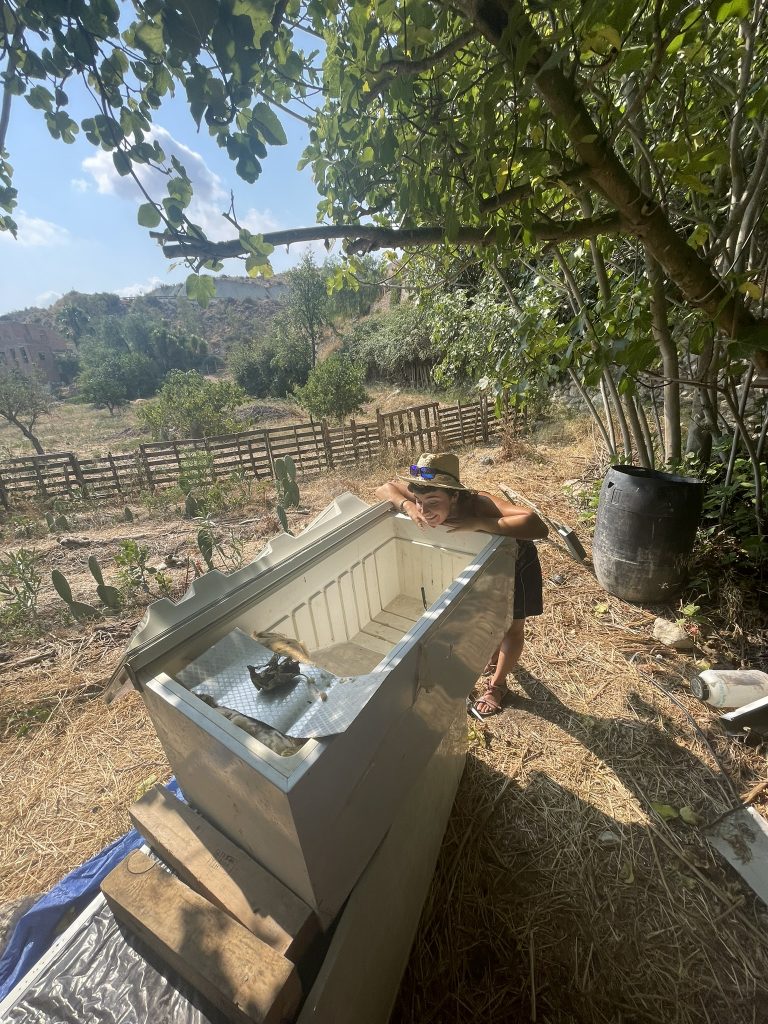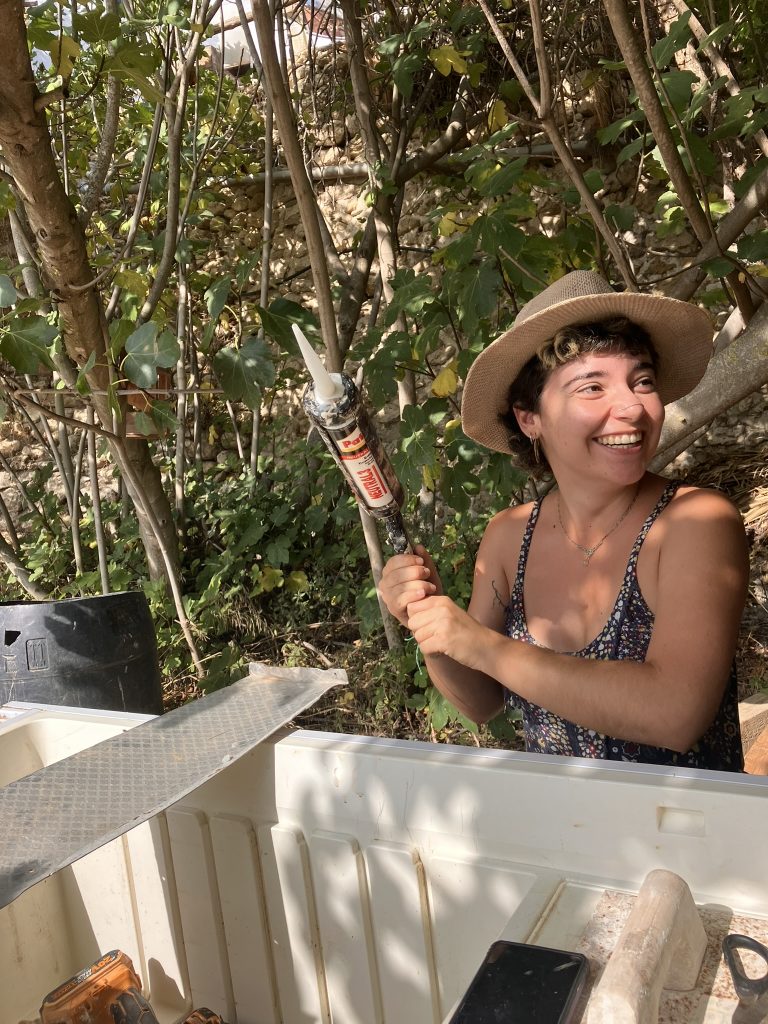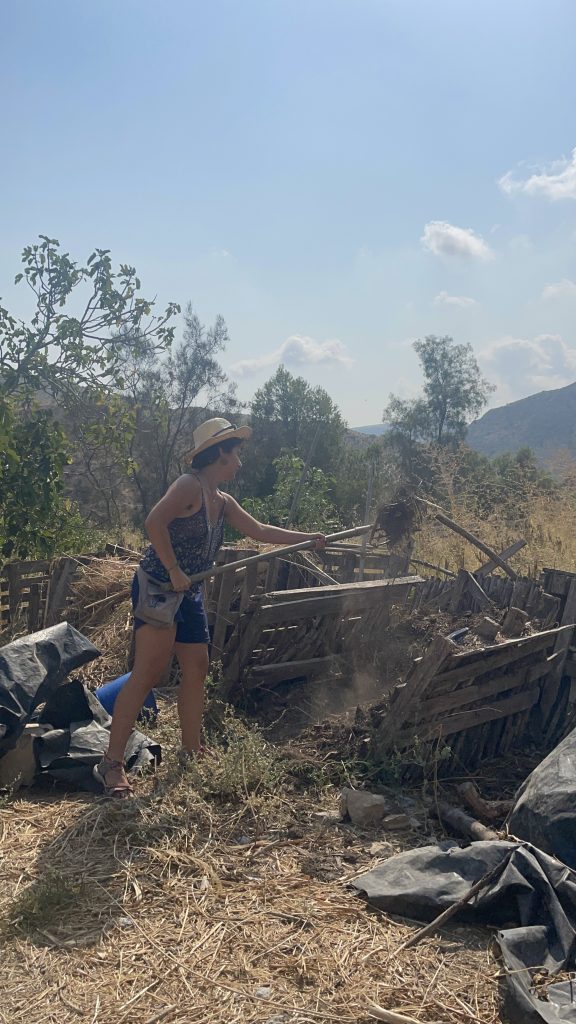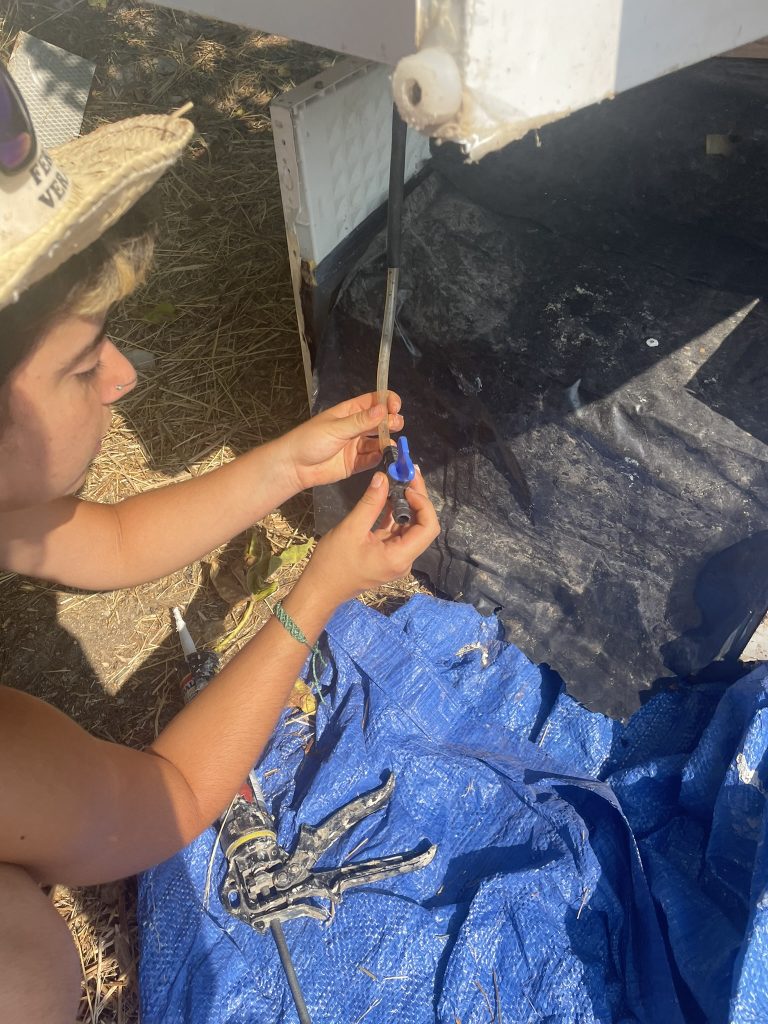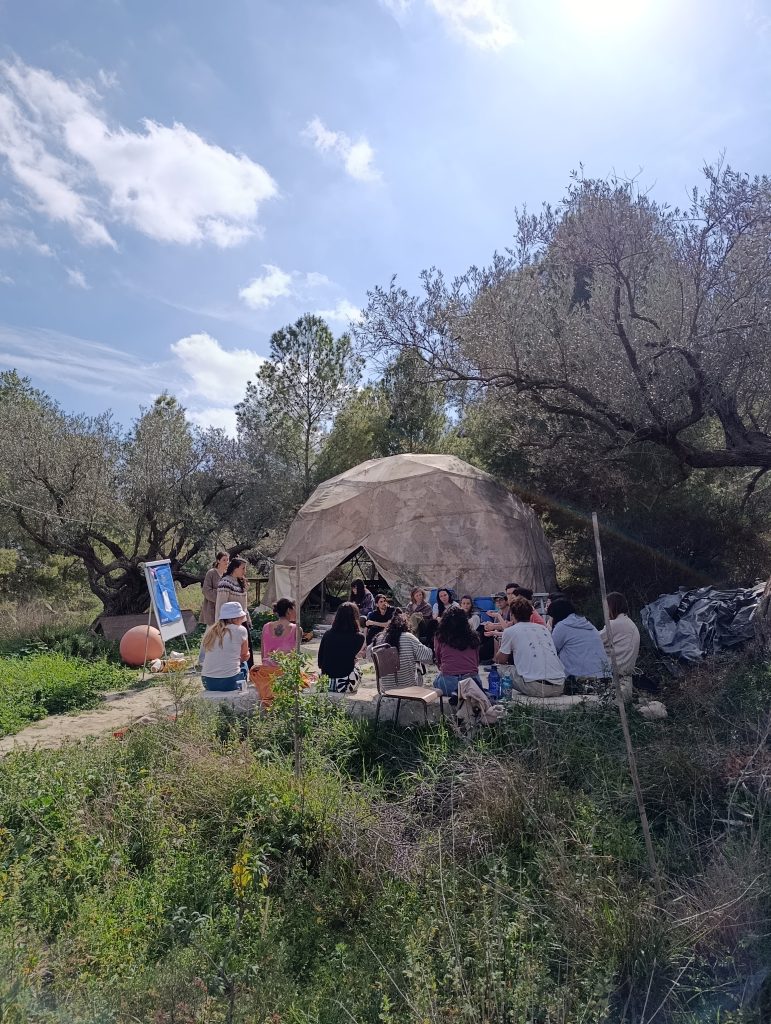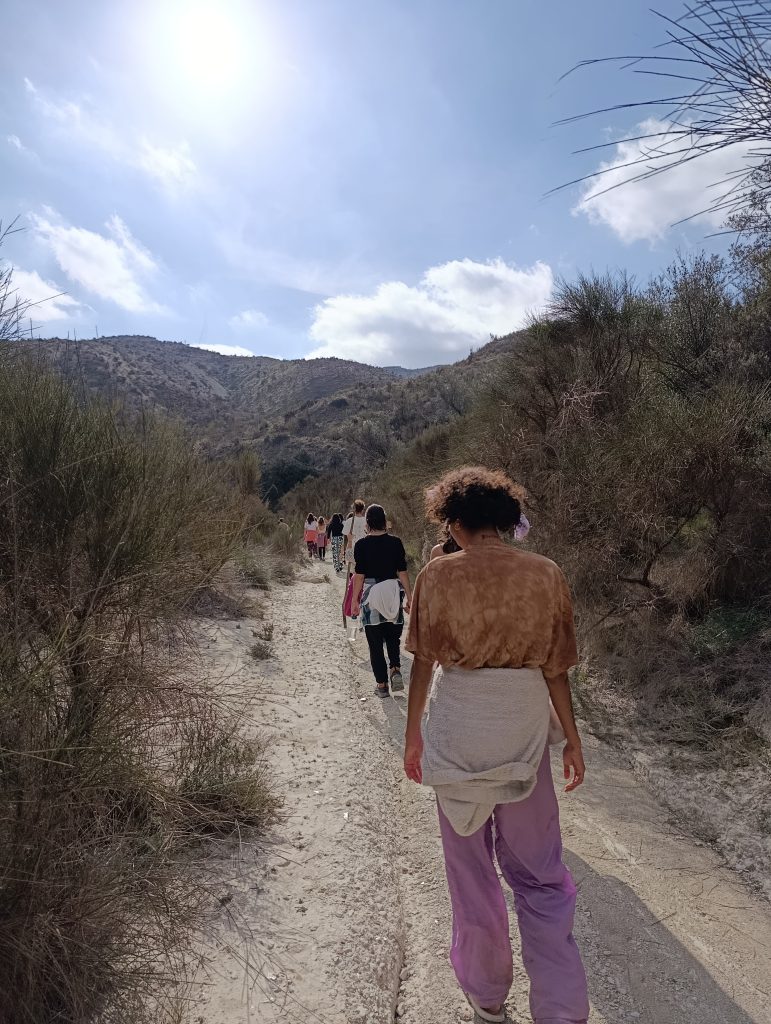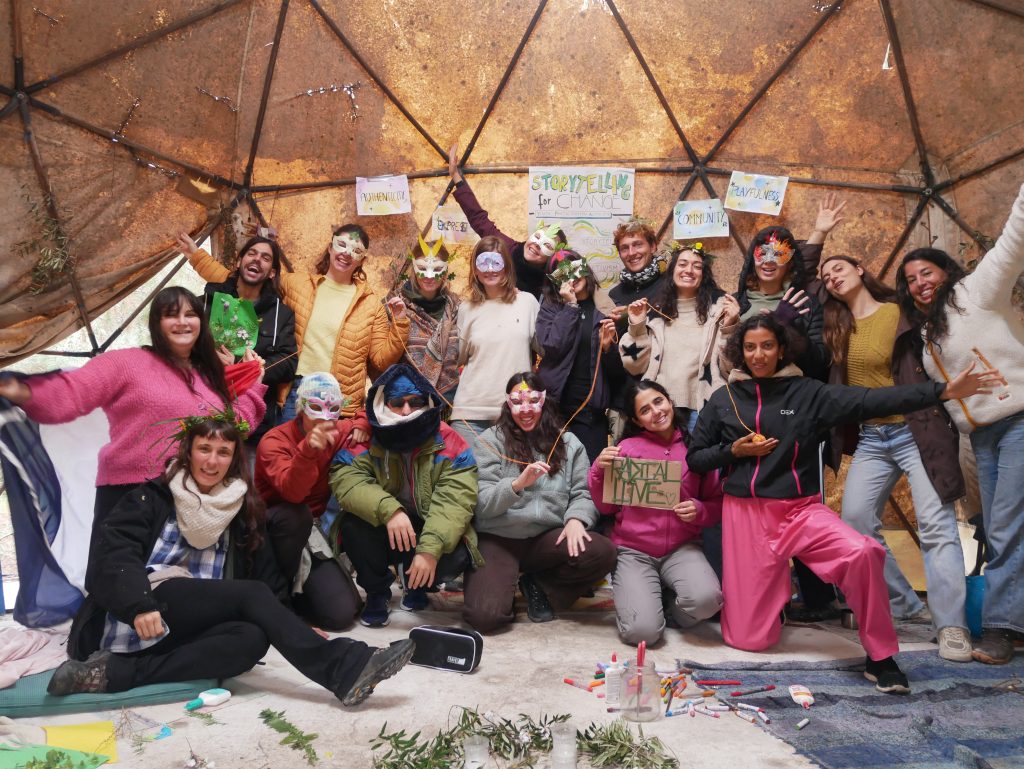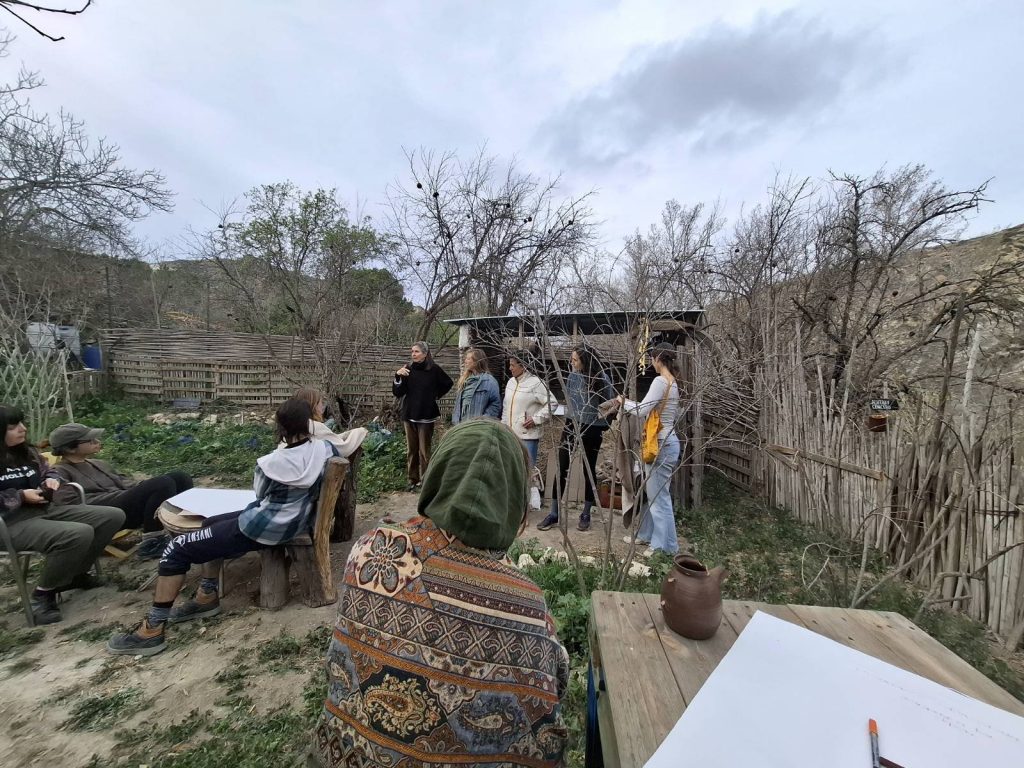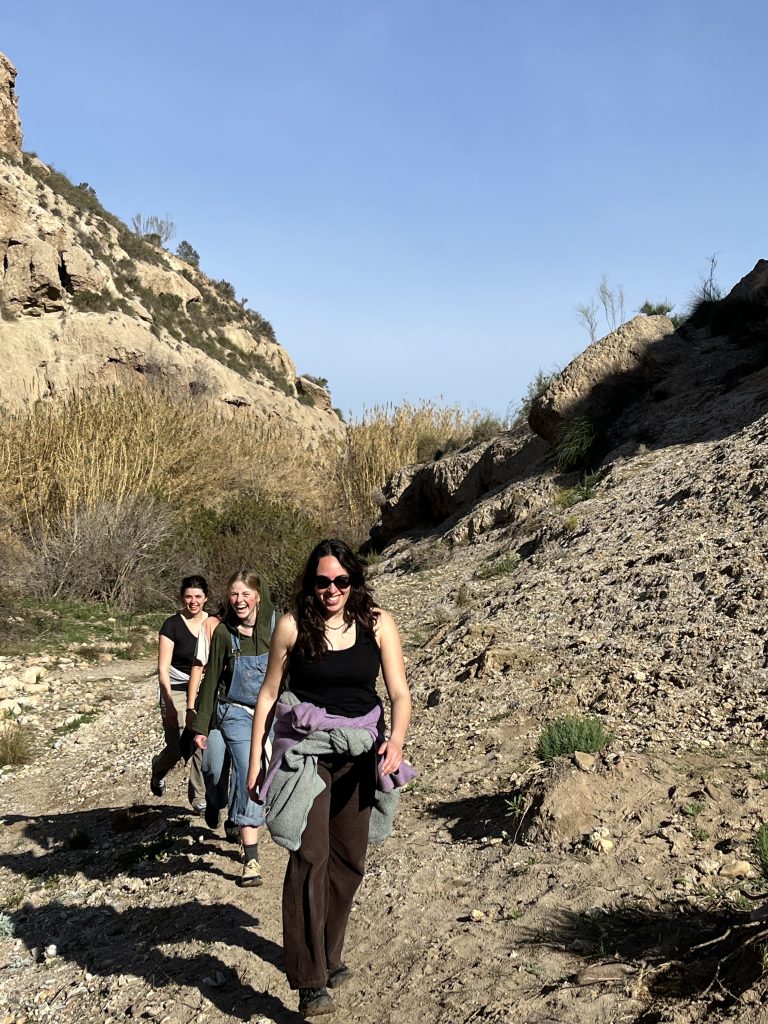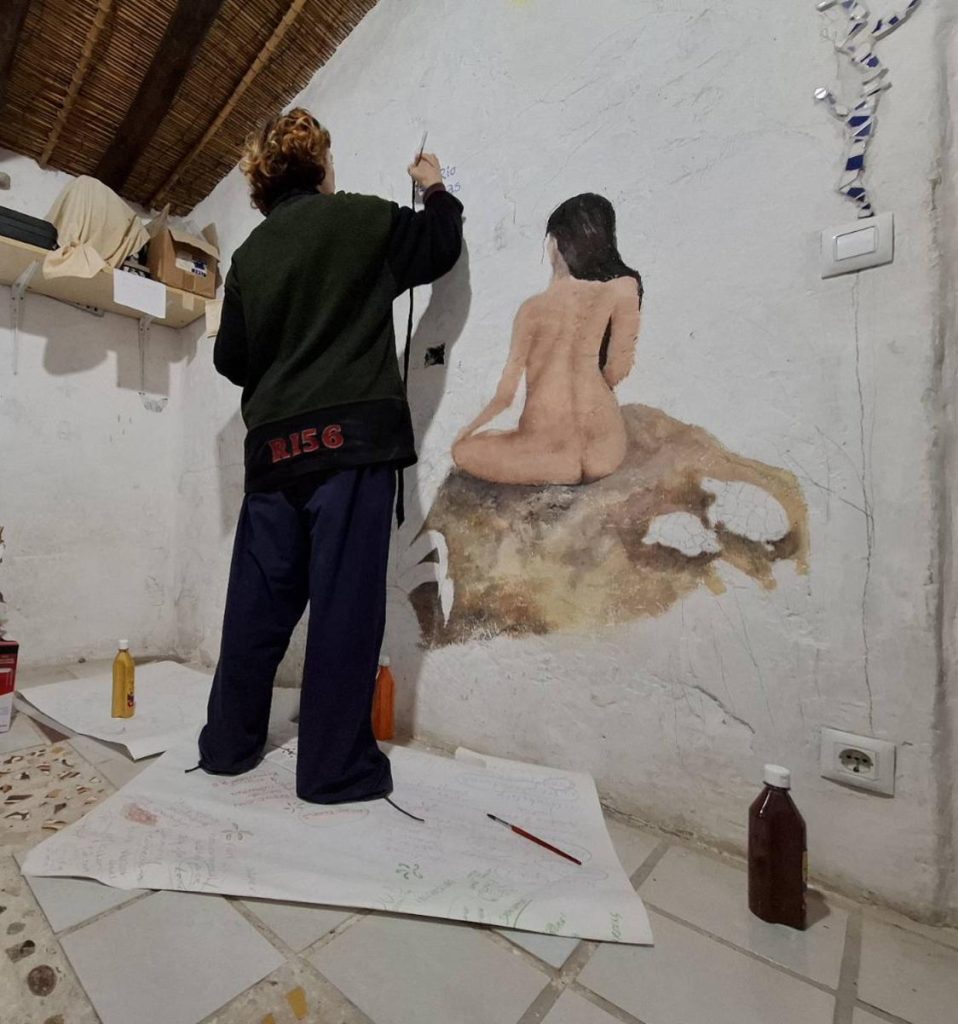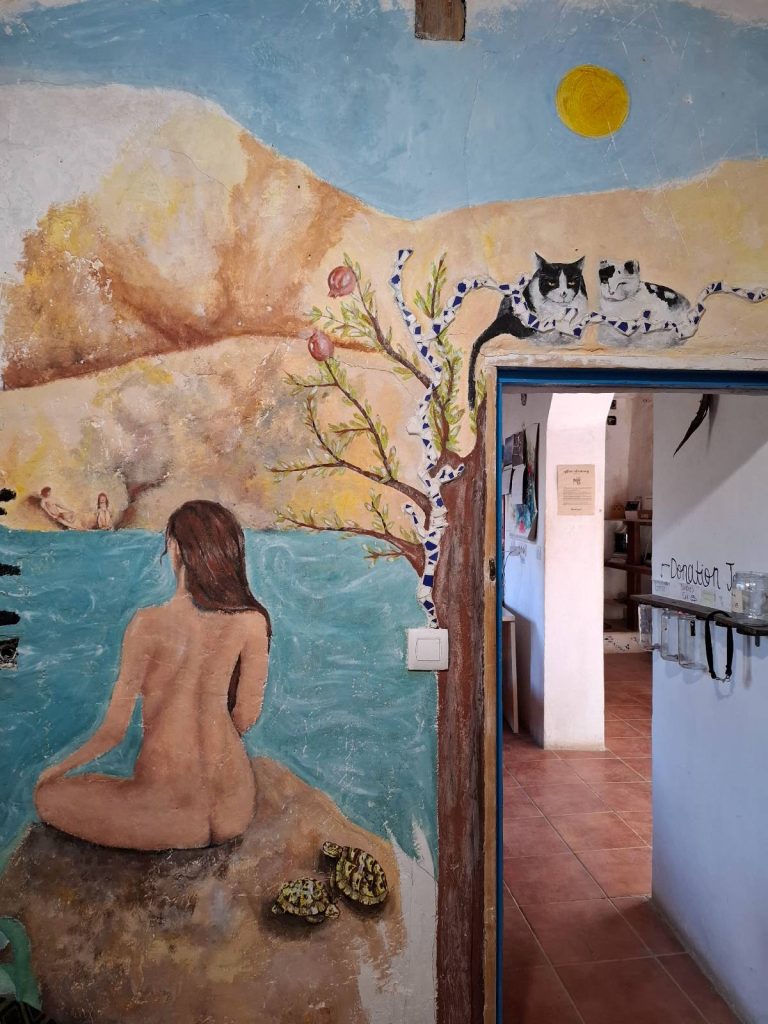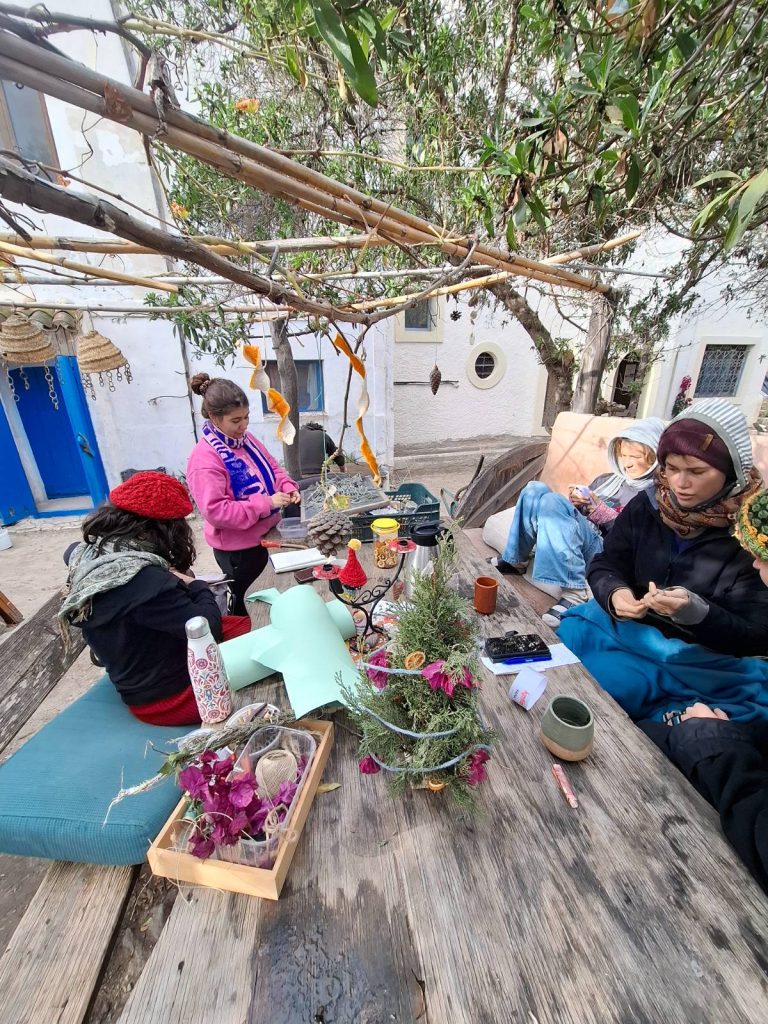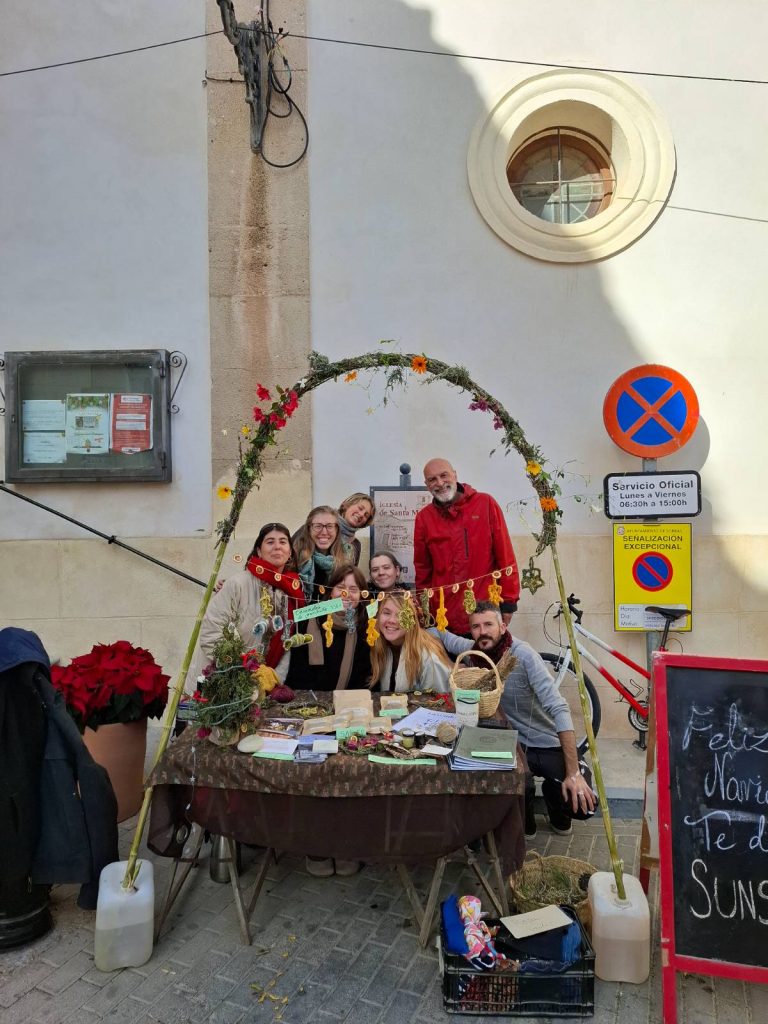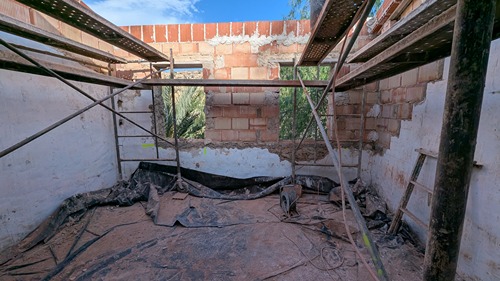Organic Gardening, Sunseed Stories, Tutorial
Anna is currently doing her European Solidarity Corps (ESC) and is staying for 6 months in Sunseed, working in the Organic Gardens Department. For her personal project, she chose to build Vermicompost bins out of old fridges, combining upcycling practices with sustainable gardening methods. In this article, she´ll introduce us to the art of vermicomposting and how it can transform our relationship with nature, discovering again how intertwined our ecosystem is.
What is Vermicomposting?
Vermicomposting is the action of creating good quality compost in order to improve the richness of our valued soils, transforming kitchen food waste thanks to the decomposition action of worms (and many other creatures!).
For this it´s required to have a vessel to hold and take care of a complex ecosystem full of micro and macro-organisms, all of them essential for the proper functioning of this system.
The living beings in the composting bin are related to each other through a trophic network composed by three levels of consumers and each one takes an important function:
- Decomposers: They turn the organic materials into inorganic ones, making it available for the absorption of the soil. In this group we can find microorganisms as bacteria, fungi, protozoon but also macroorganism as flys, worms, beetles, nails…
- Choppers: Some beings as springtails or mites are the perfect choppers to make the materia more available for the decomposers so they can digest it easily.
- Predators: Adult beetles, spiders, ants, etc. They all take an important role maintaining the balance of the bin ecosystem by doing a population control. There are also some interesting microscopic predators present as nematodes or tubelars
In a vermicompost bin we can find a complex compound of many interdependences that are cocreating and transforming life. Through this practice we have the opportunity to reflect about the importance of cooperation between humans and non-humans in order to create fertile and sustainable projects in the widest sense of the word.
Vermicomposting as a transformative tool
Also, vermicomposting invites us to start to disassemble the nature-society dichotomy so rooted in the cosmologies of our western societies. This way of thinking doesn’t take into account how vital our interdependence and ecodependence is and pushes us to relate in an individualized and ignorant way: taking the limited resources of the earth, empoverishing our soils, exploding humans and carrying out wars, inequality and suffering.
Looking closely into nature, there are excellent examples of cooperative, cocreative and symbiont relationships that can help us to think other ways of relating in order to pass through this eco-social crisis.
In the practice of vermicomposting, that is also a good example of this, we are taking part as one of those essential elements. As good vermicomposters, we have to be aware of many things before and during the process, in order to ensure the health of this ecosystem and to be able to in return, improve the fertility of our soils and be food sovereign.
On the first hand, we have to think about the state of our bin: The light penetration, the surface, depth and the bedding are important variables to consider. On the other hand, we have to have a good control of the moisture, the temperature of the bin and the kind of food we provide to the worms. Even with all this, we will probably face unexpected problems such as worms trying to escape from the bin. We will have to figure out what is going on to bring the balance back to our bins, while noticing how fragile and interconnected is a system that we are trying to keep healthy. During this process, we will develop a relationship with this non-human assembly: touching it, smelling it and feeding it with our own waste. Our modern consumer societies are trying to keep us aside from the decay and degeneration that are an inherent part of the existence. By this action of being in touch with a dirty, mouldy and decomposing compound, that comes from us; we will have the opportunity to develop another view about our lives in terms of death and impermanence which might allow us to be more aligned with the real state of the things.
In general, I think that vermicomposting can be used as a powerful educational and reflective tool to transform us radically. So that’s the reason why I want to bring this to Sunseed as my personal ESC project which is also closely related with my final thesis in anthropology. I hope that in the future, as a non-formal educational project, Sunseed will be able to not only improve our soils but as well our souls.

